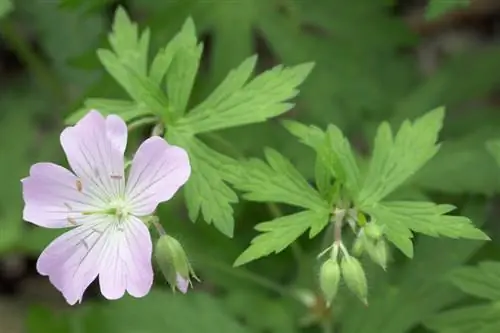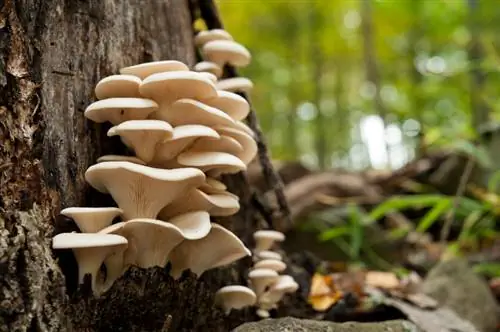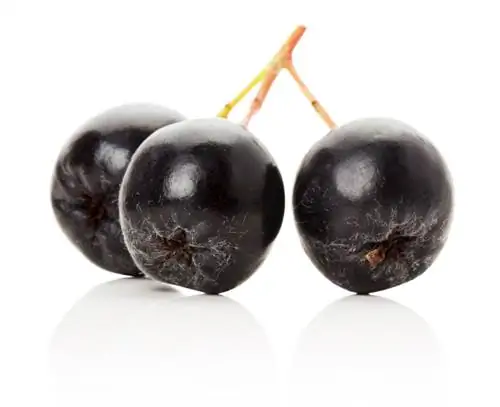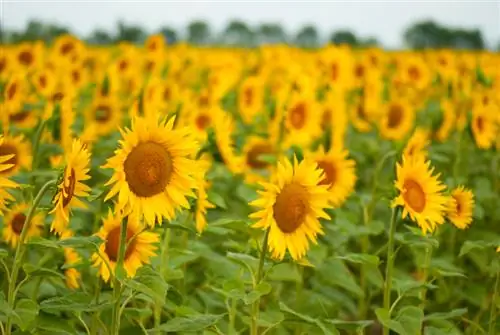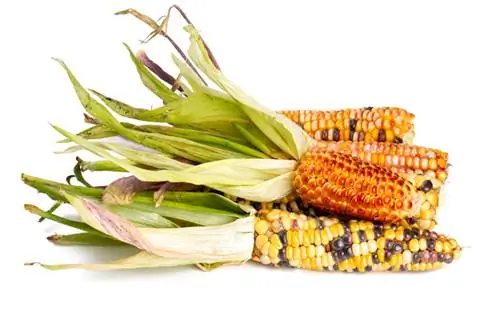- Author admin [email protected].
- Public 2023-12-16 16:46.
- Last modified 2025-06-01 06:02.
The cranesbills, which are closely related to the pelargoniums (popularly referred to as “geraniums”), are not only impressive because of their eye-catching, brightly colored flowers. Many geranium species also have beautiful, strong green foliage, which sometimes even turns bright red in autumn, providing another splash of color.
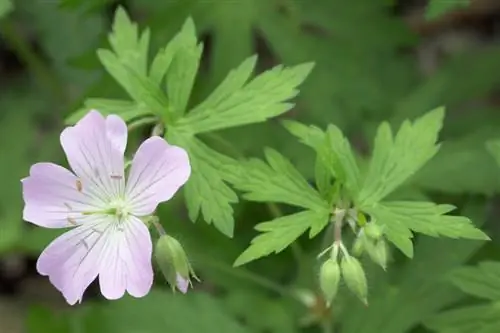
What do cranesbill leaves look like?
Storksbill leaves vary in shape and color depending on the species, with lobed, toothed or hairy leaves being common. Leaf colors range from light green to dark green, some have spots, and some cranesbills develop a red-orange color in autumn.
Leaves of the cranesbill have different appearance
Most cranesbill species have more or less strongly lobed leaves, which can also have serrations or soft, downy hairs. The leaves of other species, on the other hand, are more similar to the foliage of pelargoniums with their round shape. The predominant leaf color is usually a solid medium to dark green, although some cranesbills also develop leaves in different shades of green or with spots.
Storksbill as an ornamental leaf perennial
One of the species with such strikingly patterned foliage is the comparatively weakly flowering Caucasus cranesbill, which, however, enjoys great popularity as an ornamental foliage perennial thanks to its pretty foliage. Species with a more or less intense red autumn color are also suitable as such, bringing color back into the autumn garden after flowering. The Siberian cranesbill is particularly special in this context, as it blooms very late and its strong purple-pink flowers can often be admired at the same time as the intense orange-red autumn color of the foliage.
Storksbills and their leaves - an overview
| German name | Latin name | Leaf shape | Leaf Color | Autumn Coloring |
|---|---|---|---|---|
| Cambridge cranesbill | Geranium cantabrigiense | seven-lobed, serrated | light green | reddish |
| Gray Cranesbill | Geranium cinereum | strongly lobed, broad | greygreen | no |
| Clarke's Cranesbill | Geranium clarkei | lobed, pointed at the tips | medium green | no |
| Rozanne | Geranium cultorum | lobed, bluntly toothed, long | medium green | no |
| Himalayan Cranesbill | Geranium himalayense | lobed, bluntly toothed, very long | medium green, conspicuously veined | no |
| Heart-leaved cranesbill | Geranium ibericum | lobed, toothed, very long | medium green | reddish |
| Rock Cranesbill | Geranium macrorrhizum | round lobed | evergreen | no |
| Splendid Cranesbill | Geranium magnificum | lobed, toothed, hairy | medium green | yes |
| Gnarled Mountain Forest Cranesbill | Geranium nodosum | three-lobed, serrated | bright green | no |
| Oxford cranesbill | Geranium oxonianum | lobed, dentate, heavily veined | light green | no |
| Brown Cranesbill | Geranium phaeum | double lobed, very long | soft green with purple-brown spots | no |
| Armenian cranesbill | Geranium psilostemon | lobed, serrated | medium green, red when budding | red |
| Caucasus Cranesbill | Geranium renardii | wide, hairy, veined | greygreen | no |
| Bloody Cranesbill | Geranium sanguineum | deeply lobed, serrated | dark green | red |
| Siberian Cranesbill | Geranium wlassovianum | lobed, softly hairy | dark green, brown-pink when budding | orange red |
Tip
Depending on the type and variety, the geranium foliage should also be cut back from time to time, with the best time for this being either late autumn or spring.

